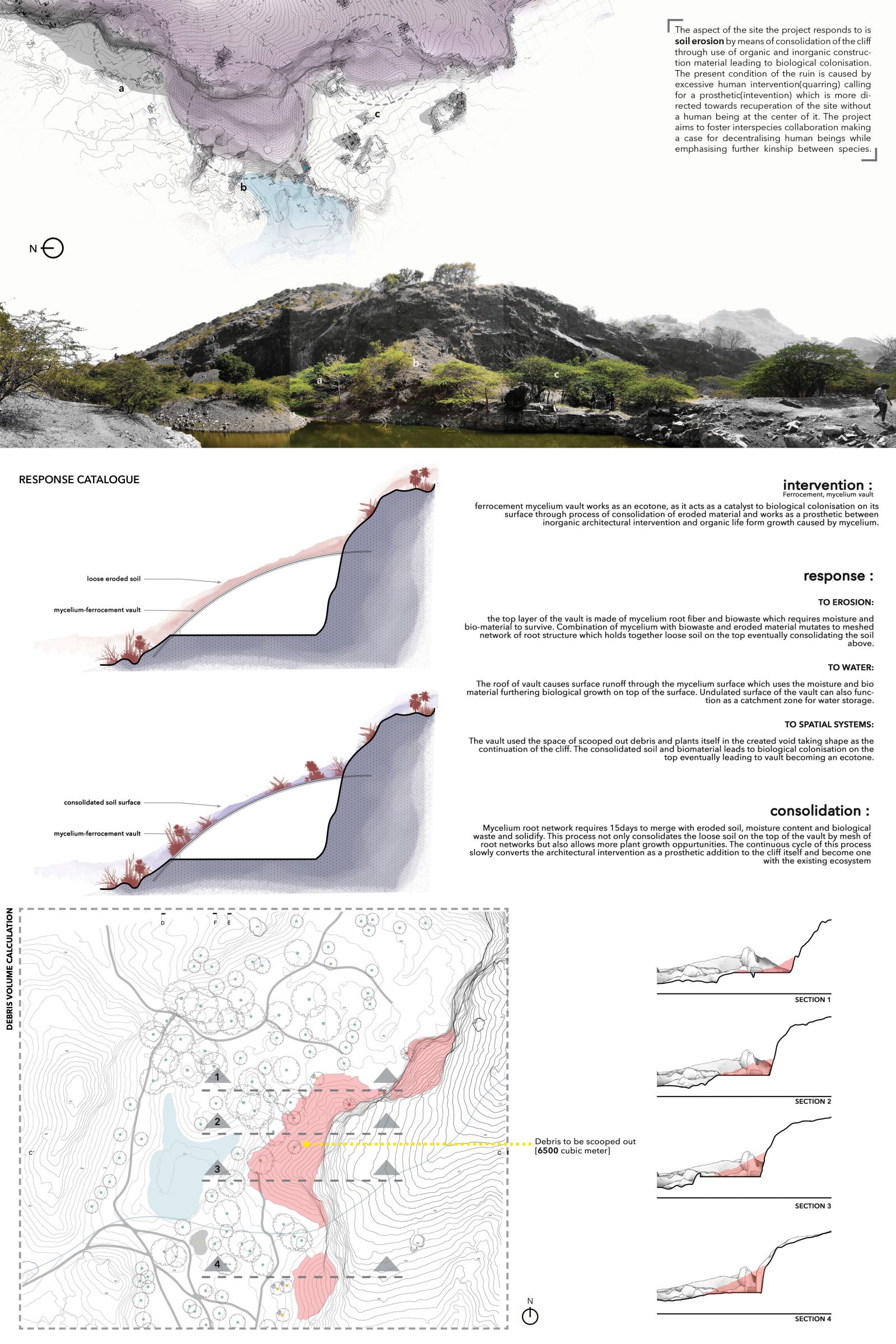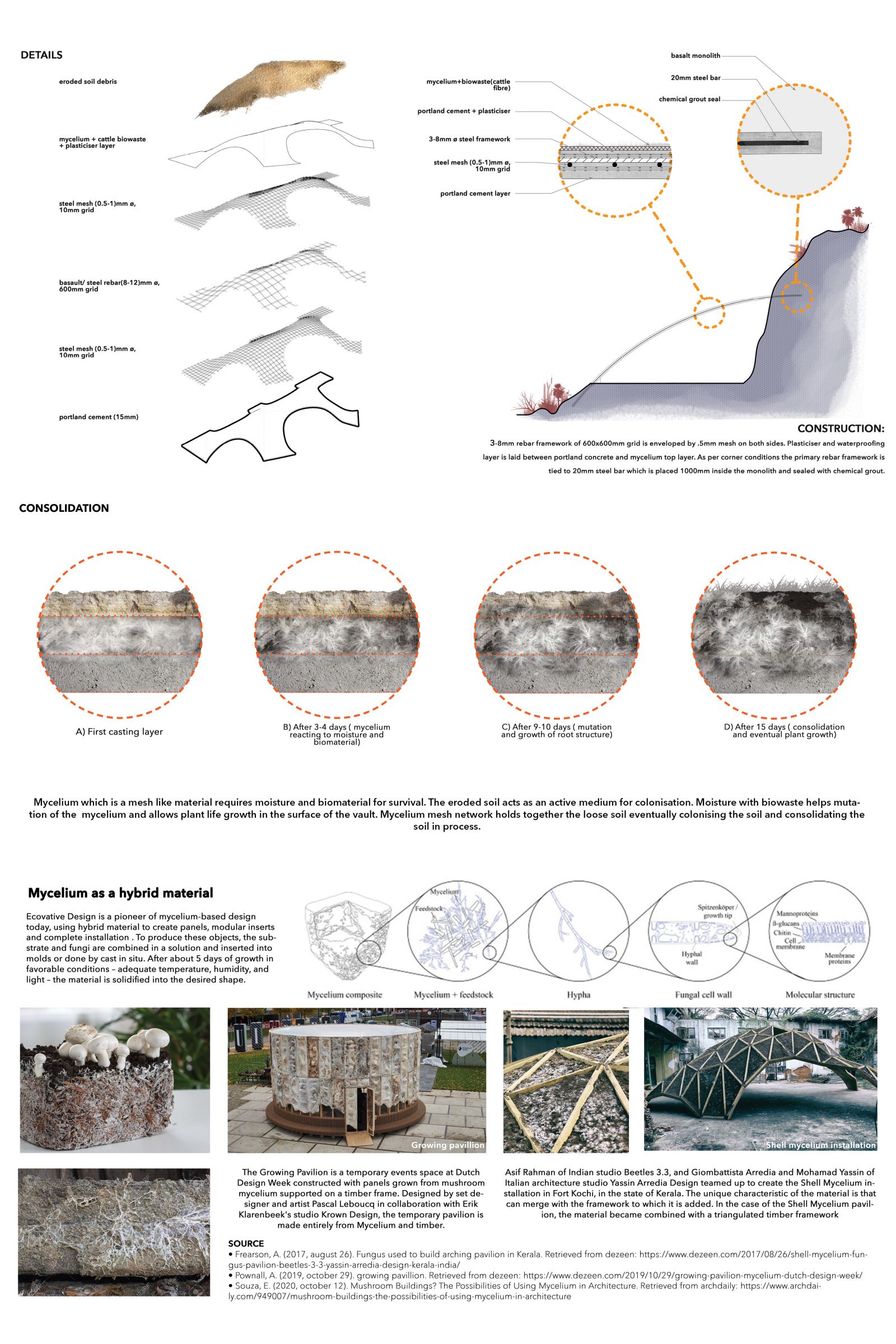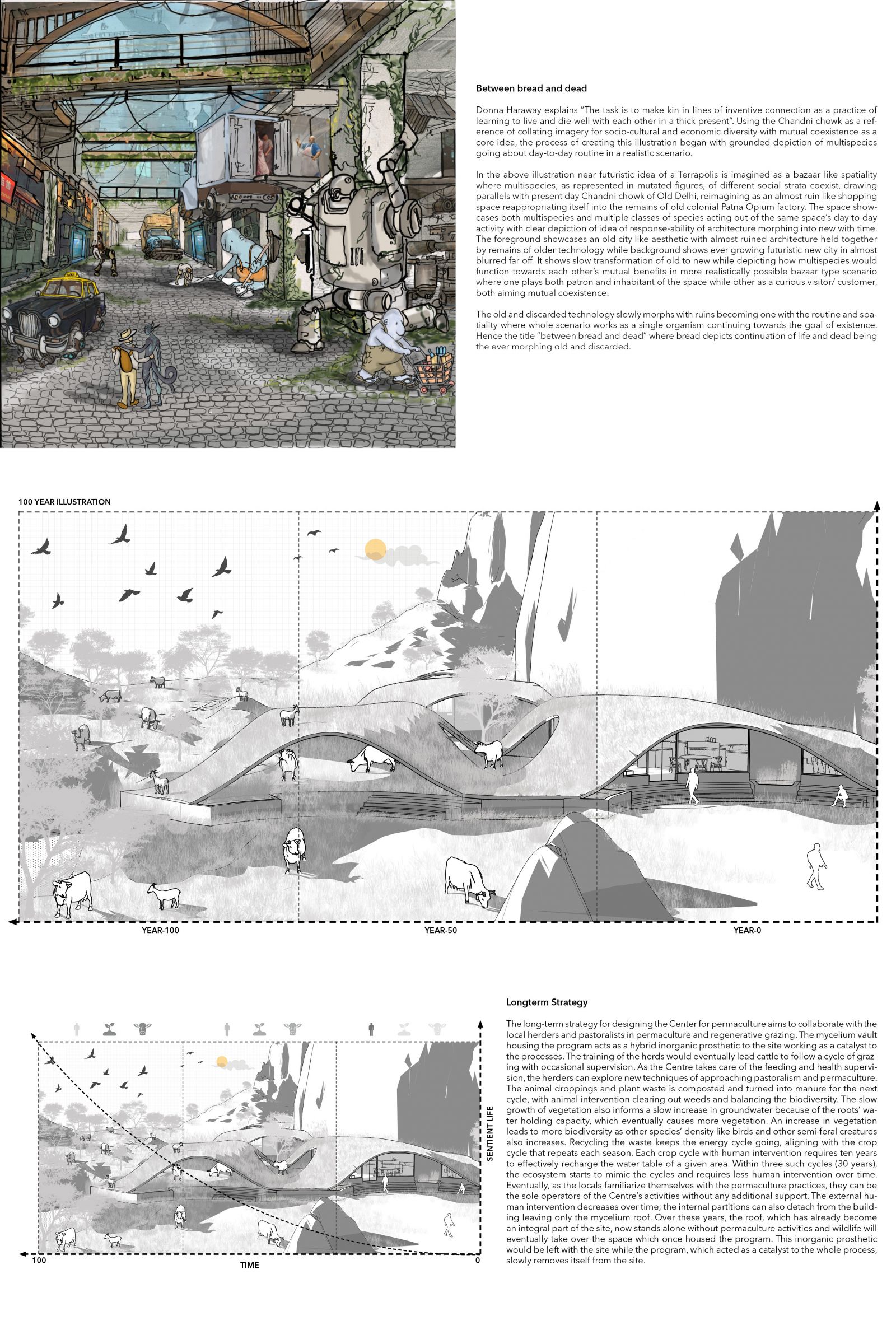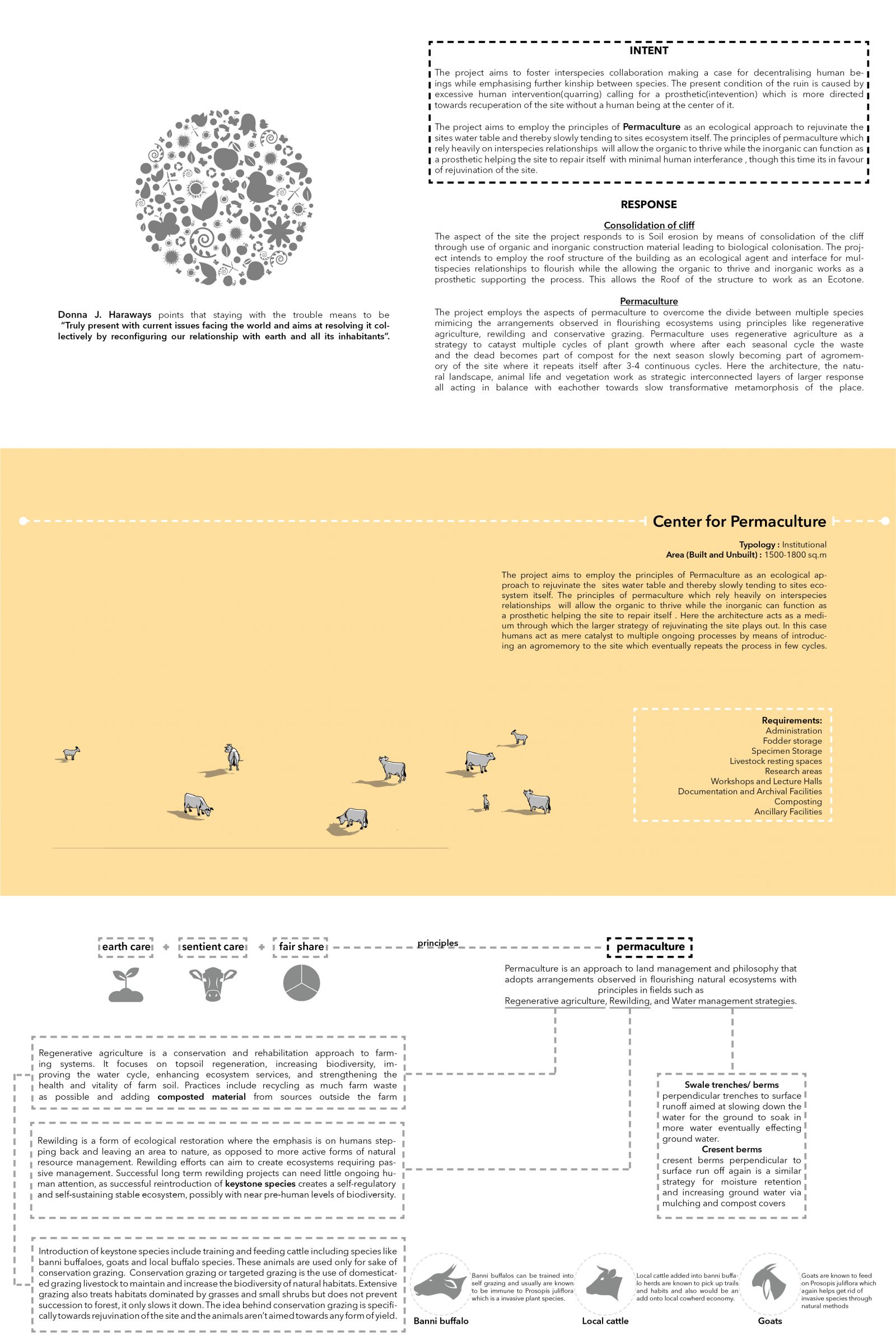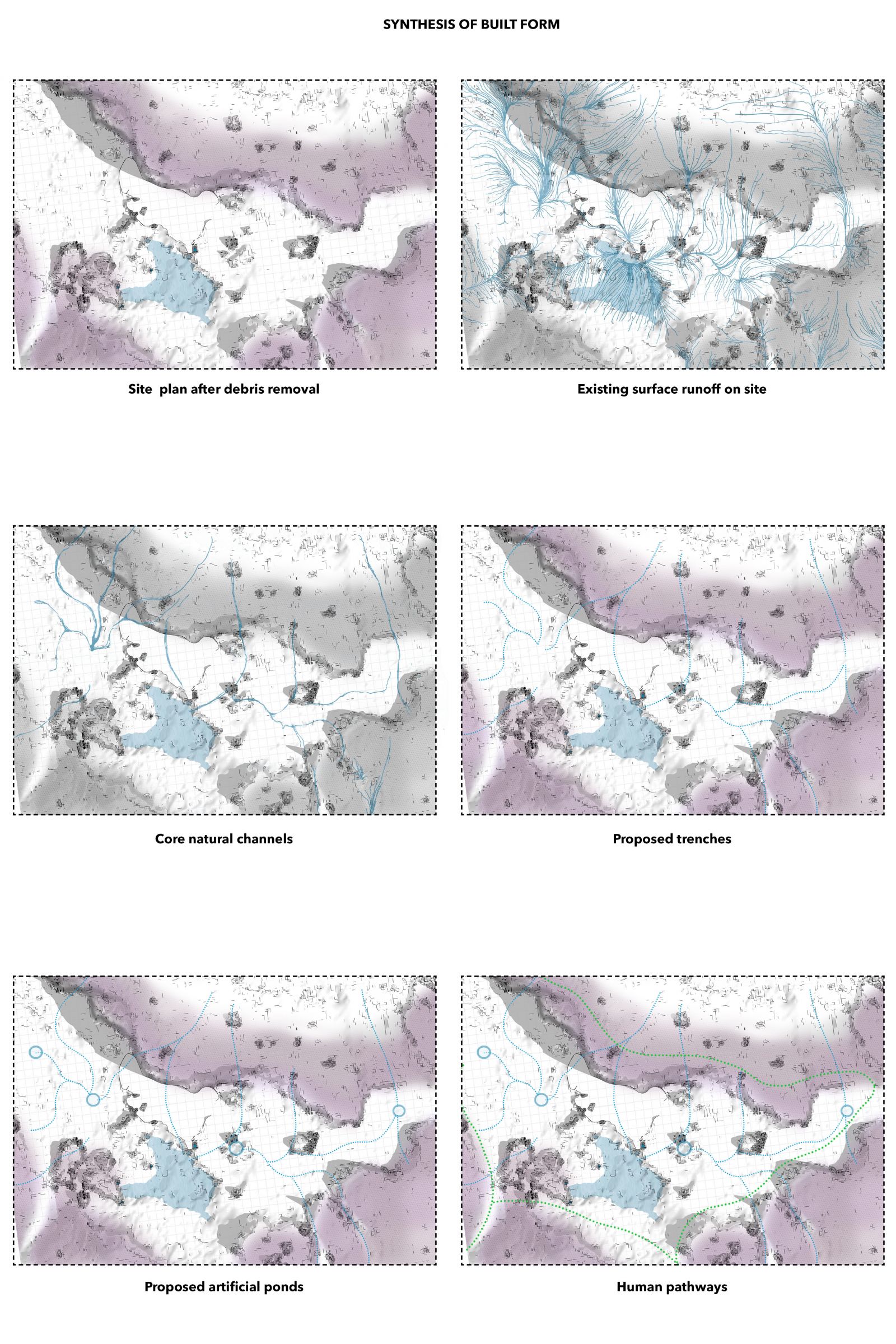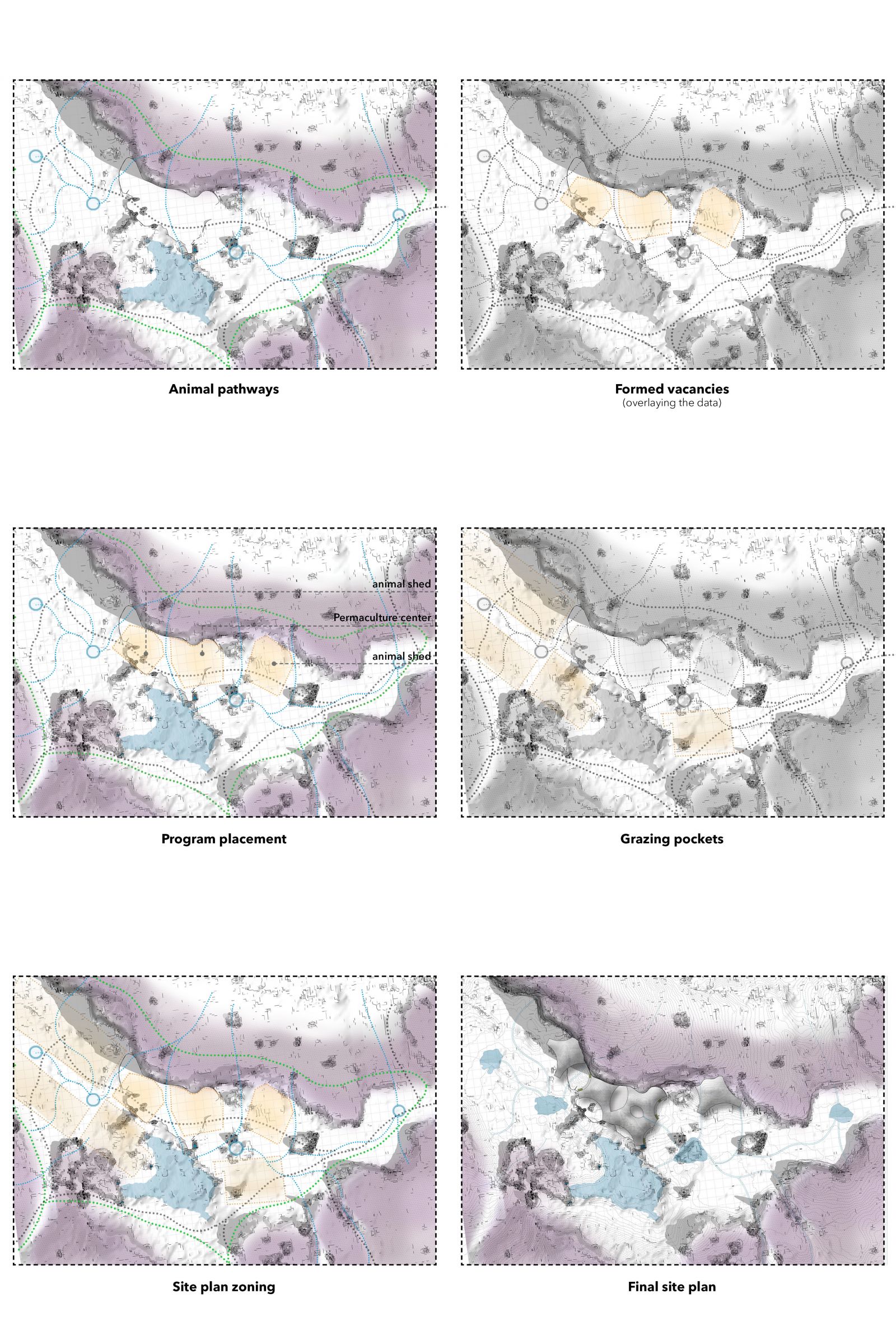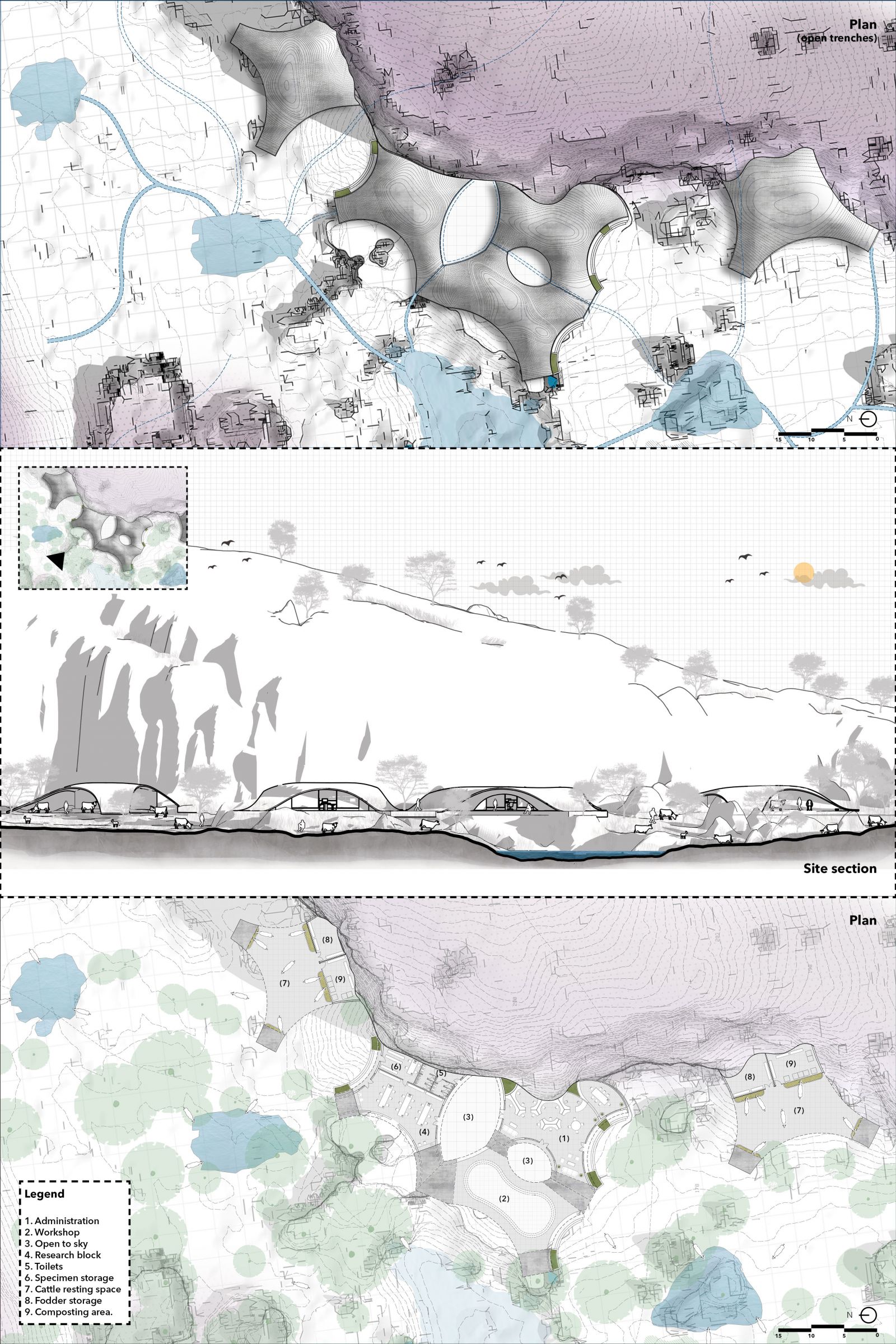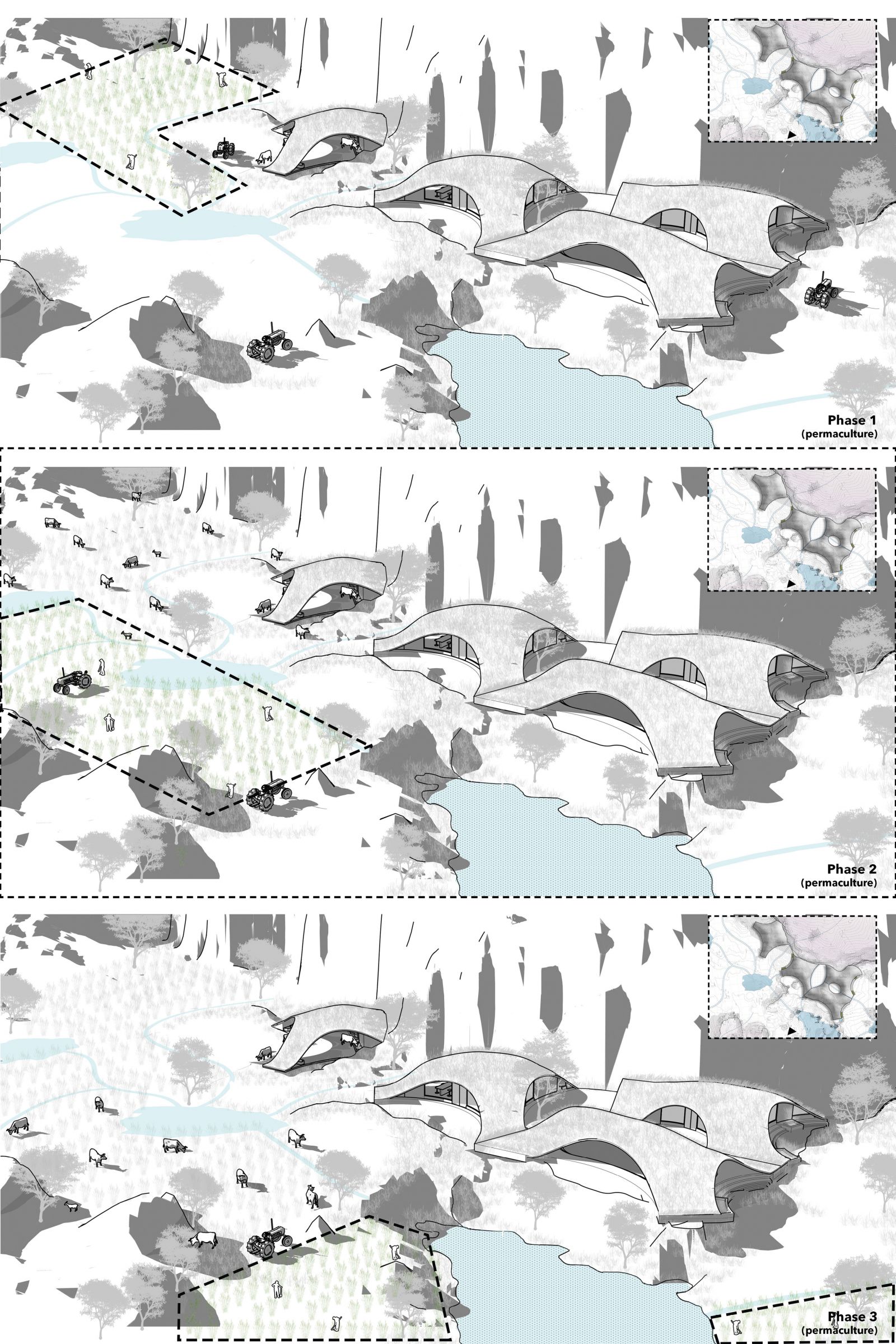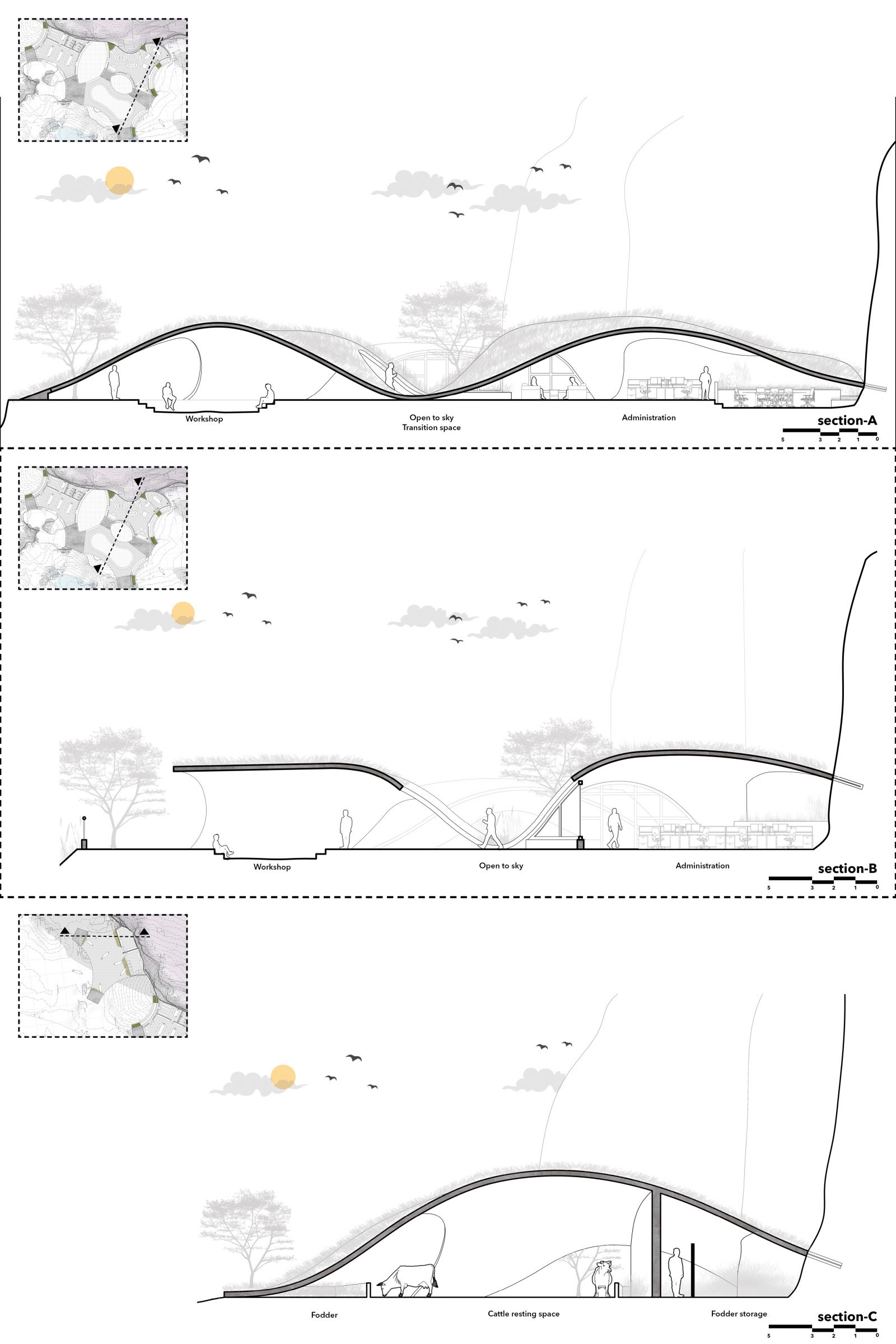- Student NAKKANA KARTHIK
- Code PG190442
- Faculty Architecture
- Unit L4 Studio Unit
- Tutor/s Sonal Mithal
- TA Ashwatha Chandran
Center for permaculture aims to collaborate with the local herders and pastoralists in permaculture and regenerative grazing. The mycelium vault housing the program acts as a hybrid inorganic prosthetic to the site working as a catalyst to the processes. As the Centre takes care of the feeding and health supervision, the herders can explore new techniques of approaching pastoralism and permaculture. The animal droppings and plant waste are composted and turned into manure for the next cycle, with animal intervention clearing out weeds and balancing the biodiversity. The slow growth of vegetation also informs a slow increase in groundwater because of the roots’ water holding capacity, which eventually causes more vegetation. An increase in vegetation leads to more biodiversity as other species’ density like birds and other semi-feral creatures also increases. Recycling the waste keeps the energy cycle going, aligning with the crop cycle that repeats each season. Each crop cycle with human intervention requires ten years to effectively recharge the water table of a given area. Within three such cycles (30 years), the ecosystem starts to mimic the cycles and requires less human intervention over time. Eventually, as the locals familiarize themselves with the permaculture practices, they can be the sole operators of the Centre’s activities without any additional support. The external human intervention decreases over time; the internal partitions can also detach from the building leaving only the mycelium roof. Over these years, the roof, which has already become an integral part of the site, now stands alone without permaculture activities and wildlife will eventually take over the space which once housed the program. This inorganic prosthetic would be left with the site while the program, which acted as a catalyst to the whole process, slowly removes itself from the site.
